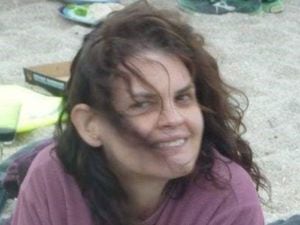Son takes on punishing physical challenges around the world to fundraise in mother's memory
An adventurer from Stafford has completed some of the most punishing physical challenges on the planet to raise money for charity – all in memory of his mother.
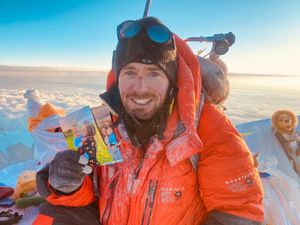
Adam Jones decided to raise money for an ovarian cancer charity after his mother, Jacqueline, passed away, but he didn't do this with a fun run or a bake sale.
Instead, he chose to battle the elements and take on three of the toughest challenges possible, which he has called the Sea, Sand and Snow Challenge.
In the space of the year, Adam ran 250km through the Sahara Desert for the Marathon des Sables, climbed to the top of Mount Everest, and kayaked all on his own across the Irish Sea.
His incredible efforts have raised £10,000 for Target Ovarian Cancer, and another £2,000 for Fight For Sight, a pioneering sight loss charity - as Adam also suffers from an eye disorder.
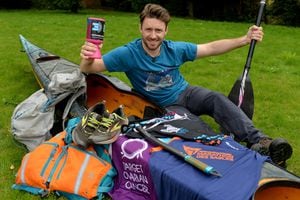
The 35-year-old adventurer and property company owner said: "After my mom passed away I decided to take on a bit of a challenge. I thought, it would never be as difficult as what she went through.
“I chose to support Target Ovarian Cancer as they work to improve early diagnosis of ovarian cancer, something my mum wasn’t able to get, which is crucial for greater chances of survival.
“My mum was such an inspiration to me in the way she fought until the end. She was the most selfless person I’ve ever known.”
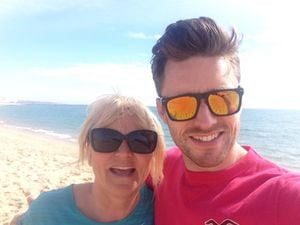
He added: "I also raised funds for Fight for Sight to show other people it's possible to overcome tough times and achieve your dreams, having undergone a cornea transplant and suffered with the eye condition kerataconus when I was 10.
"I had to wear two sets of contact lenses in both eyes. At 23, I had a cornea transplant in my right eye and had to lie completely horizontal for three months."
Kerataconus occurs when the cornea - the clear, dome-shaped front surface of the eye - thins and gradually bulges outward into a cone shape. This can cause blurred vision and sensitivity to light and glare.
However, Adam's determination to embrace some of the toughest challenges on Earth could have posed a risk to his vision.
"My optician said the cornea transplant might not work on the Everest," he admitted.
"He told me 'you're kind of the guinea pig on this.' No one had gone to that height with this transplant before, and it could stop working at any height."
Thankfully, Adam's transplant did not falter, and he believes he is the first person to have completed these three challenges in the space of just a year.
Marathon des Sables
“I wanted to do some challenges that would raise a lot of sponsorship for Target Ovarian Cancer and there’s not one much bigger than The Marathon des Sables,” Adam said.
“This ultramarathon in the Sahara desert is the toughest footrace on earth!”
This is not hyperbole. Organisers of the Marathon des Sables describe it as: "The stuff of legends - a truly gruelling multi-stage adventure in one of the world's most inhospitable environments, the Sahara Desert. It is indisputably the toughest footrace on Earth."
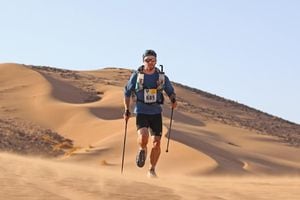
Translating to Marathon of the Sands, participants of this gruelling challenge run a 251km ultramarathon across the Sahara in blistering temperatures which can soar to over 50°C.
"The heat broke my tent mate's thermometer in the midday sun after hitting 62°C," Adam said, after taking on the Sables in October last year.
"That time of year just out of summer, we didn't have the cool evenings as a normal April Marathon des Sables (MDS) would provide.
"Instead it was warm all night which meant it was difficult to sleep and for the body to ever cool down."
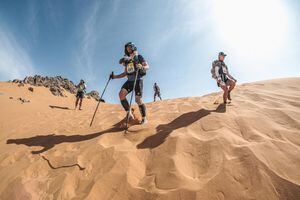
The challenge is done over seven days with around 700 runners taking on the sweltering trek.
Adam prepared by running the Brighton Marathon in full desert-proof kit, but it still seemed like "an impossible task".
"I'm not ashamed to admit I had thoughts of quitting after the suffering of stage one in the desert," he admitted. "I wasn't even sure how I dragged myself over the line that day.
"It's usually around 35-40°C for the MDS with a drop out rate of five per cent, but that year it was dubbed the toughest ever with a drop out rate of 50 per cent and temperatures recorded in excess of 55-60°C.
"This just seemed the impossible task. To finish was looking ominous."
He added: "Reflecting now there were many self-inflicted mistakes I made. It was after all my first ever ultramarathon race.
"My bag was far too heavy and I ran downhill to fast in the unbearable heat with my body also dehydrated which sent too much load through my joints.
"Even walking in any form of soft sand was excruciatingly painful for my left knee.
"I learnt its amazing how my body could cope with some rest and improves when you slow down and stretch."
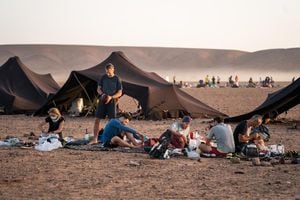
Adam took a picture of his mom with him on the journey, so she was with him all the way.
And despite half of that year's participants dropping out, Adam crossed the finish line on October 8, also the date of his fifth wedding anniversary - to some life-changing news.
"I was told on the finish line in the Sahara Desert that my wife was pregnant. I was in bits."
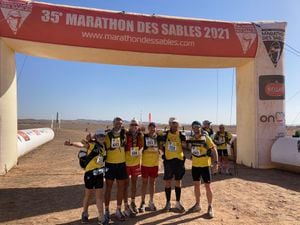
But even after achieving the impossible, Adam did not rest on his laurels for too long, because his next mission was in sight.
Mount Everest
"I've wanted to climb Everest since I was 27, maybe even younger," Adam said, having dreamed of climbing the world's highest mountain.
However, Adam had a dilemma, as his wife Helen was pregnant with their daughter, Emily. "We talked and decided together, let's go for it."
The timing was just right, as Helen gave birth to Emily just three days after Adam returned home from Everest.
Adam set off on his trek in April of this year, having been warned by his optician that his body could reject his corneal graft while on the climb.
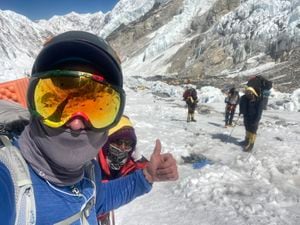
"There was a real risk there. My dad and sister were telling me not to go ahead with it. I have always had the mindset of you don’t ever know what will happen if you don’t try.
"So embrace it all now while you can. I wanted to inspire people with similar conditions who set a barrier for themselves because of it.
"There’s always boundaries to push – I’ve always been that way and my condition has made me think like this even more. If I set myself a goal I will always try my best to achieve it."
Joining a group of 20 strangers, Adam set off on the once-in-a-lifetime experience and wanted to do his best without pressuring himself to reach the summit.
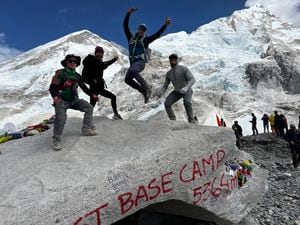
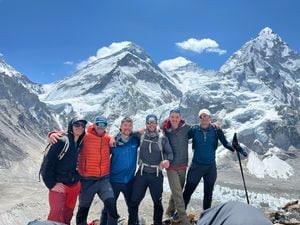
He prepared his body by training in an oxygen restricting mask, hiking and running with it to get fully exposed to the difference in breathing.
But like many others, he couldn’t have predicted the mental barriers that came along the way.
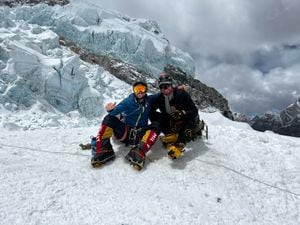
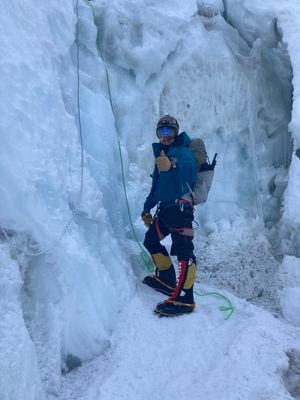
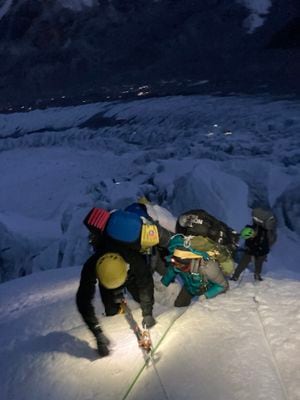
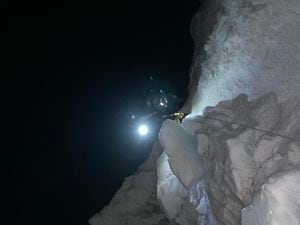
He said: "It’s definitely a battle. It’s unforgiving up there. People can drop their guard, especially on the way down. So you have to stay focussed and find new motivation every single day."
Speaking about the most challenging part, at Camp 2, which has an altitude of 6400m, he said: “I felt ill and couldn’t even come out of my tent.
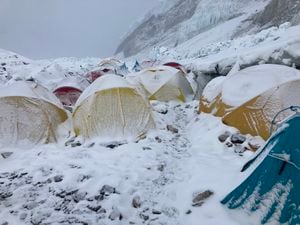
"Apparently my oxygen levels were at 57 per cent and at the time I didn’t realise the severity of that.
"But since then I have spoken to a few people in the medical profession who told me that is dangerously low, and would ordinarily lead to emergency care. I'm not sure how I survived that.
"I’m glad I didn’t know this at the time because a day or two later we had to go to Camp 3. I felt that I really pushed through barriers to get there.
"I genuinely wasn’t sure if my body could cope. Having to feel awful and have to convince yourself to keep going is really difficult."
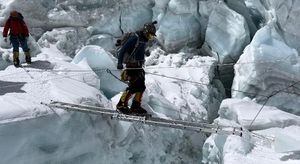
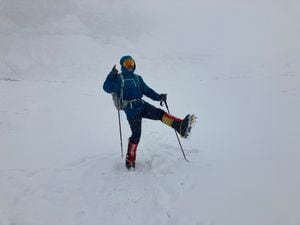
Adam had one particularly terrifying experience while in the so-called Death Zone of Everest.
"I was slipping, with a 10,000 feet drop on one side and a 12,000 feet drop on the other," he said. But that wasn't the most horrifying part of his journey.
"I slipped and almost fell on a dead body," Adam said. "It was really scary."
When people die in the Death Zone of Everest, the bodies are almost impossible to recover, and there are now over 250 bodies left on the mountain.
To make matters worse, Adam didn't even have a tent at this point of the trek, and had to scramble for shelter inside a ripped yellow tent which had been left behind.
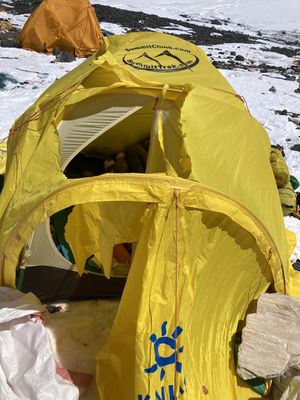
"I thought, I need to sort my head out and get this done now," the 35-year-old said, and decided he would take on the summit.
Adam reached the summit on May 21, one of 12 to do so out of his group of 20 people. He also had a picture of his wife, Helen, and son, William, with him.
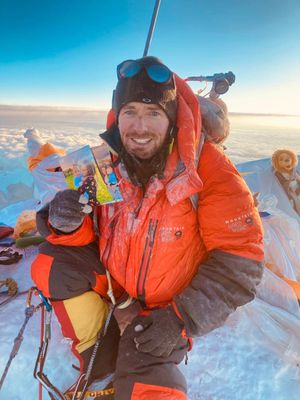
Recalling the experience, he said: “It was epic. We formed a little team of six for a few hours, went through a really rocky bit that was quite tough and then two of us kicked on to reach the south summit.
“Even there we felt such elation. It just felt unreal to be that high. At the final summit, we just sat there admiring the sunrise and taking it all in and waited for the rest of our small team to join us.
"I made sure to not touch my phone for a good few minutes.”
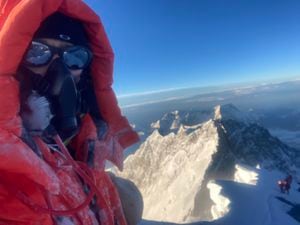
Solo kayaking across the Irish Sea
"I always wanted to kayak across the Irish Sea. I couldn't rope anyone else in, so I just decided to do it on my own," the 35-year-old said.
Adam's third challenge had its fair share of challenges and wonders, as he said: "I nearly capsized my boat with the deck hatch open trying to rummage for food, but thankfully it didn't take on too much water."
He also said: "It was pretty scary, paddling out at sea on my own at night, with the tides the way they were.
"But as I was going out, I saw a massive pod of dolphins. There were about 20 or 30 of them. It was pretty incredible."
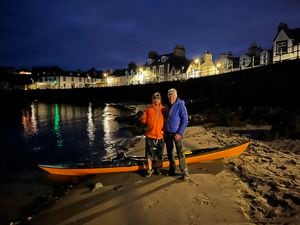
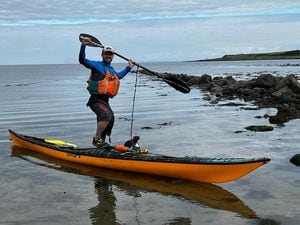
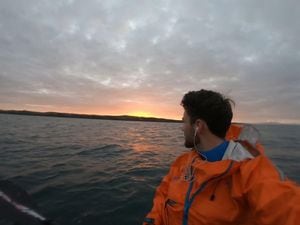
"I was able to navigate the seas and arrive in Ireland to meet my dad with my van, sink a scotch and have a few Guinnesses given to us generously, courtesy of a pub in Belfast after hearing about the crossing.
"It's not the furthest route, nor is it the shortest route, but I'm pretty happy to have done my first solo unsupported sea crossing."
Adam finished his kayaking on September 19, completing his Sea, Sand, and Snow Challenge.
And while he had to battle scorching and freezing temperatures, bustling tides, and even a dead body, Adam said: "It's not everyday you get to fulfil a childhood dream."




